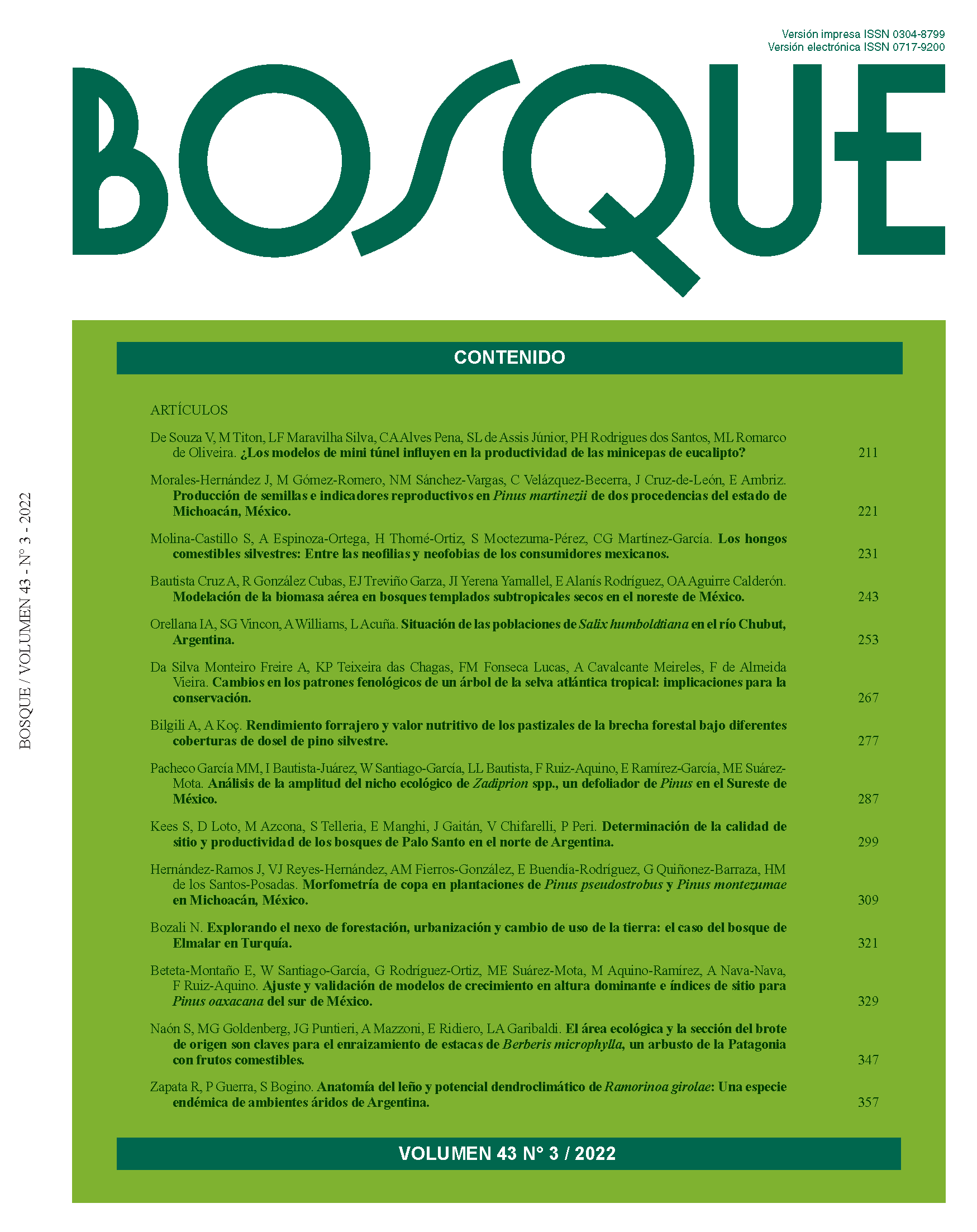Changes in phenological patterns of a tropical Atlantic Forest tree: implications for conservation
Main Article Content
Abstract
The study of the phenological patterns of plants contributes to the understanding of their ecological functioning and related ecosystem services, especially of little-known species. Manilkara salzmannii is a tree native to the Atlantic Forest that occurs in disturbed urban expansion areas. This study aimed to characterize the phenological pattern of M. salzmannii and to correlate its phenophases with meteorological variables. Evaluations were carried out over three years, during which time reproductive and vegetative phenophases were observed in the sampled population. The activity and Fournier indices were initially considered, and circular statistics were later applied. For the correlation with climate, we used data corresponding to the month of observation, as well as one month and two months beforehand. The species has an annual pattern of reproductive events. However, there was variation in the phenological pattern over the three years regarding vegetative and reproductive phenophases. In 2016, there was barely any bud production and blooming, which negatively influenced fruiting events. Leaf senescence was more intense in periods of higher temperature and solar radiation. On the other hand, leaf shedding was more intense in periods of lower wind speed, higher humidity, and precipitation. Immature fruiting correlated positively with temperature and solar radiation, but negatively with humidity and wind speed. Among the implications for the conservation of M. salzmannii, the knowledge obtained regarding the length of the reproductive period stands out. Thus, this study’s results can guide the appropriate timing of fruit collection for seedling production programs.

